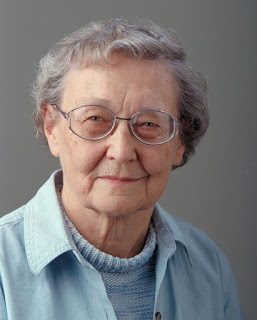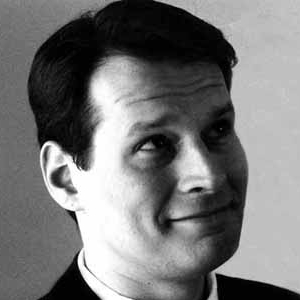Author’s Note: This is an interview I sat on for about 15 years, always intending to write a larger article. Oh well, I still can someday…
In a nursing home in St. Paul, Minnesota last year [2018], a 91-year-old Quaker named Rhoda Gilman died, and her death was barely noted — which is a shame, because she led a fascinating life. She wrote several excellent books on American history, raised a family, ran for lieutenant governor of that state in 2002, and was one of the early leaders of the Green movement in America … and lived through one of the great and unappreciated lost chances of world history.

That’s a sweeping statement, I know, but let me explain.
By “Green movement,” I don’t mean simply the Green Party – although she helped found that organisation – or the environmental movement. The word “environmentalist” has been applied to many things, from activist celebrities to the latest expensive eco-fad. The movement I’m thinking of has rarely been noticed by mainstream media, or else has been called many names: back-to-the-land-ism, bio-regionalism, deep ecology and many other labels. The best word for it, though, in the purely dictionary sense, would be “conservative.”
I’m referring to a diverse movement of people casting aside the stereotypes of left and right, who mostly live on homesteads and revive traditional ways of life. Most are private and stay under the radar of the internet for a reason, but I know many of them on homesteads across the USA, the UK and Ireland. Rather than take their inspirations from celebrity environmentalism, they embraced a radical traditionalism, following figures like economist E. F. Schumacher, theologians like Ivan Illich or Father Thomas Berry, and do-it-yourselfers like John Seymour. Many were quite religious – sometimes conservative Catholics like Schumacher, Illich or Berry, some Lutheran or Mennonite, some Quakers like Gilman. And they began to appear just as the world was becoming aware, on a mass scale, of issues like pollution, climate change and consumerism. There was once a time, though, when Christians forming their own communities in the country talked to, and were sometimes the same people as, the ecologists and libertarians doing the same.
“I saw it as an alternative to the identity politics that were already springing up and dividing people. Women, blacks, gay people, American Indians, now Asians … Identity politics is made to order to divide and conquer. I saw the Green Movement as bridging all of those, and responding to the basic problems …” — Rhoda Gilman
Unfortunately, all Greens were branded as “far-left,” and the growing evangelical movement of the time “far-right” – both simplistic and somewhat inaccurate labels. During a crucial window of history, when we had a chance to really avert any serious climate change and manage an orderly rearranging of civilisation rather than a catastrophic decline, Green ideals failed to catch on among the larger and politically powerful Christian movements.
About 15 years ago, I sat down with Gilman in her apartment to talk about the early years of the Greens, and of what could have been.
Kaller: One of the reasons I wanted to do this is because, in the popular media when the name Green comes up, everyone in mainstream political ideology talks about them in very specific terms: ultra-leftists, split off from the Democrats, made Gore lose.
Gilman: And environmentalists.
Kaller: Yes, and I’ve heard that even from some people who joined the Greens recently, people who believed this stereotype and liked it. So I’d like to publicise the actual beliefs of the Greens and where they came from.
Gilman: I can’t speak for Europe, I only know this country. In 1970 there was the Club of Rome report from Donella Meadows, in 1973 the Catholic economist E.F. Schumacher wrote Small is Beautiful, in 1979 the scientist James Lovelock published Gaia, and people like Arne Naess and Murray Bookchin expanded on their ideas. Bookchin was part of the very early Green movement here, in social ecology, and was part of the left wing of the Green Movement when it was first founded in this country.
My own feeling is that ecology as we know it today is based on systems theory. Norbert Wiener wrote The Human Use of Human Beings in the 1950s, and then Gregory Bateson applied some of those same ideas to nature.
Kaller: Could you tell me more about them?
Gilman: Weiner was an early computer man, and is fairly well-known; if you look him up on the Internet you’ll get the whole story. Gregory Bateson was an anthropologist, and for a while the husband of Margaret Mead. He was also very interdisciplinary, applying systems theory to evolution. I have several of his books here – Steps To an Ecology of Mind and Mind and Nature are probably his best-known. The intellectual currents of the time were leading towards the Green movement, and Bateson was close to Schumacher …
The intellectual roots of the Green Movement are right there. Donella Meadows died just recently, but her work on the Club of Rome report in 1970 was the one that created the term “limits to growth.” I see that as much more integral to the Green movement than, say, the Sierra Club or Save the Whales.
Environmental organizations tackle a problem or group of problems. These seekers went to the basic problems with our industrial society that are going to have to change because the planet can’t support it. That is, to me, the essence of the Green Movement.
I joined the Green Party – or the Green Movement, before it was a party, early on – because it was the one umbrella group that faced the whole problem of the need for change, rather than joining the Left. The socialists and communists still worked within the framework of an industrial society. The Greens said, “We’ve got to question the whole thing.”
Also, in this country, politically, I saw it as an alternative to the identity politics that were already springing up and dividing people. Women, blacks, gay people, American Indians, now Asians – at that time Asians weren’t in the picture yet. Identity politics is made to order to divide and conquer. I saw the Green Movement as bridging all of those, and responding to the basic problems facing our industrial civilization.
That’s why it’s international. It’s facing the problems not of a country or even a system like capitalism, it’s facing the problems of the entire planet.
Photo: Satjelia Eco Village (Sunderbans) 2017. By Ankur P from Pune, India. Via Wikimedia Commons https://commons.wikimedia.org/wiki/File:Satjelia_Eco_Village_(Sunderbans)_(37611025834).jpg






